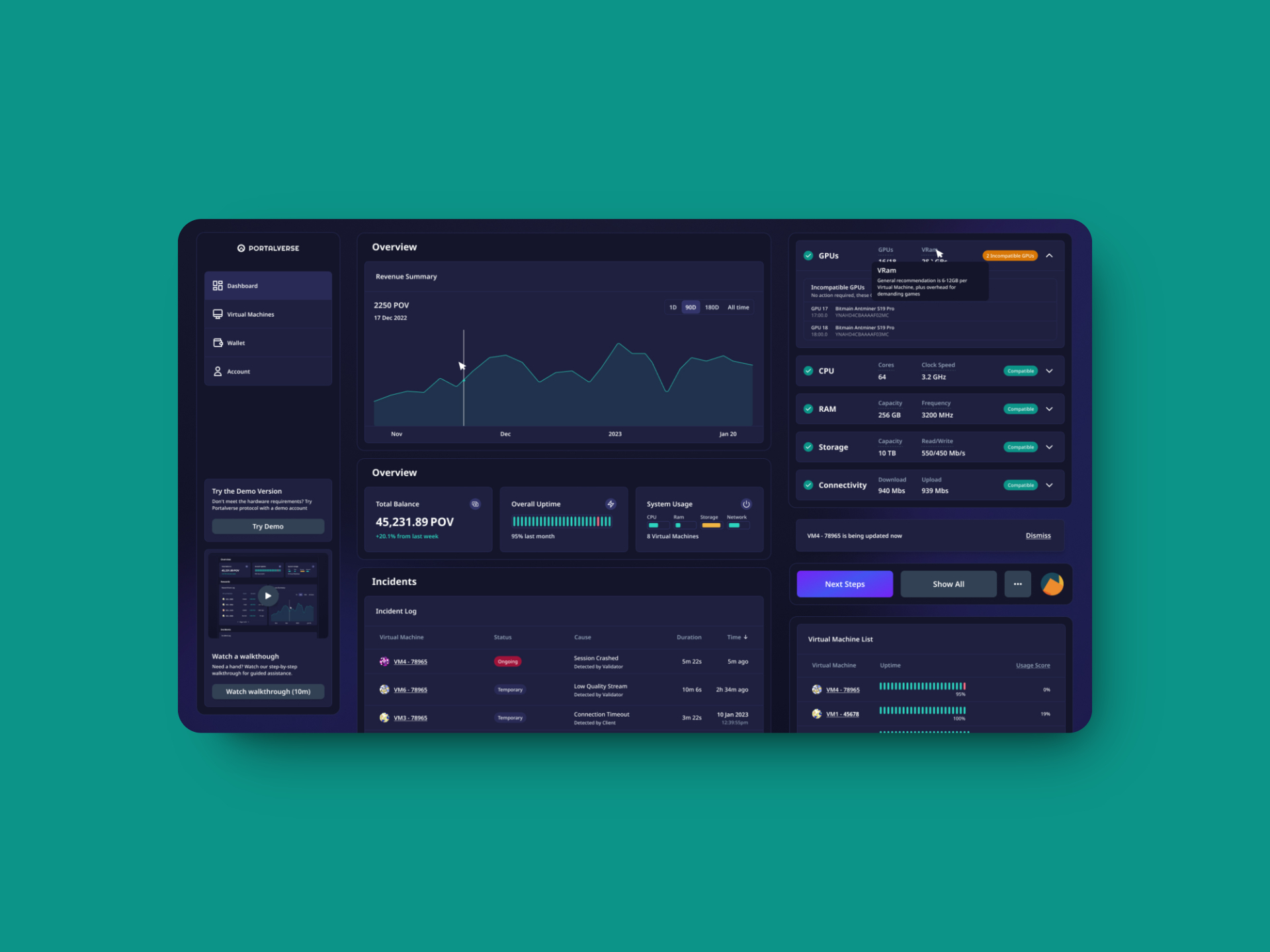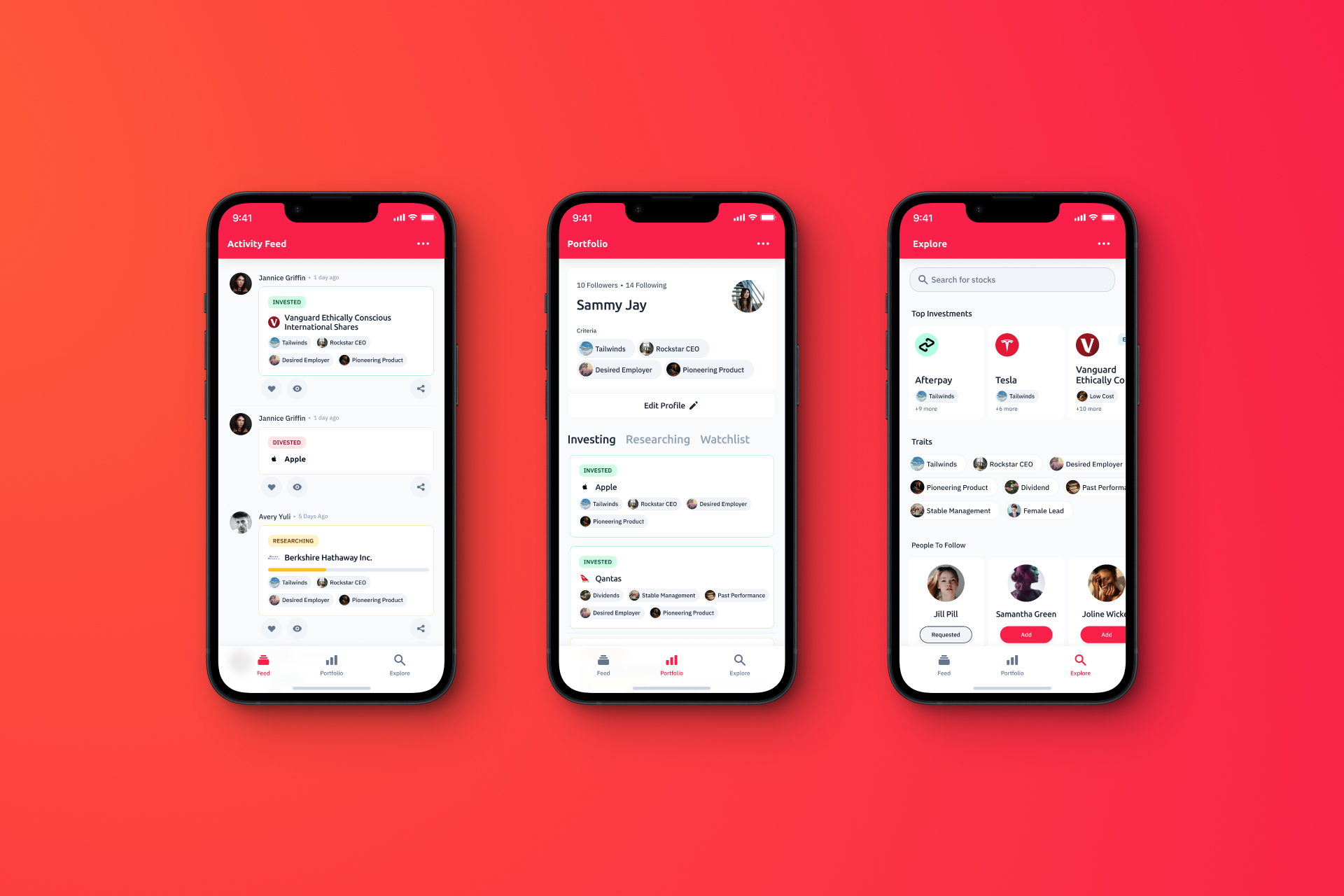Overview
As design lead at Portalverse, my role was to transform their technical demo of a peer-to-peer cloud gaming network into a viable product. To realise this vision, we designed two applications: a B2B2C platform for cloud streaming providers and a consumer app for cloud gamers.
Our target users were cryptocurrency mining operators seeking new opportunities to make money with their powerful hardware. The Portalverse Protocol enabled mining operators to provide streaming services using their existing mining hardware.
This service enabled our users to become cloud game streaming providers. We embarked on creating a web-based platform to monitor their earnings, manage virtual machines and troubleshoot any issues.
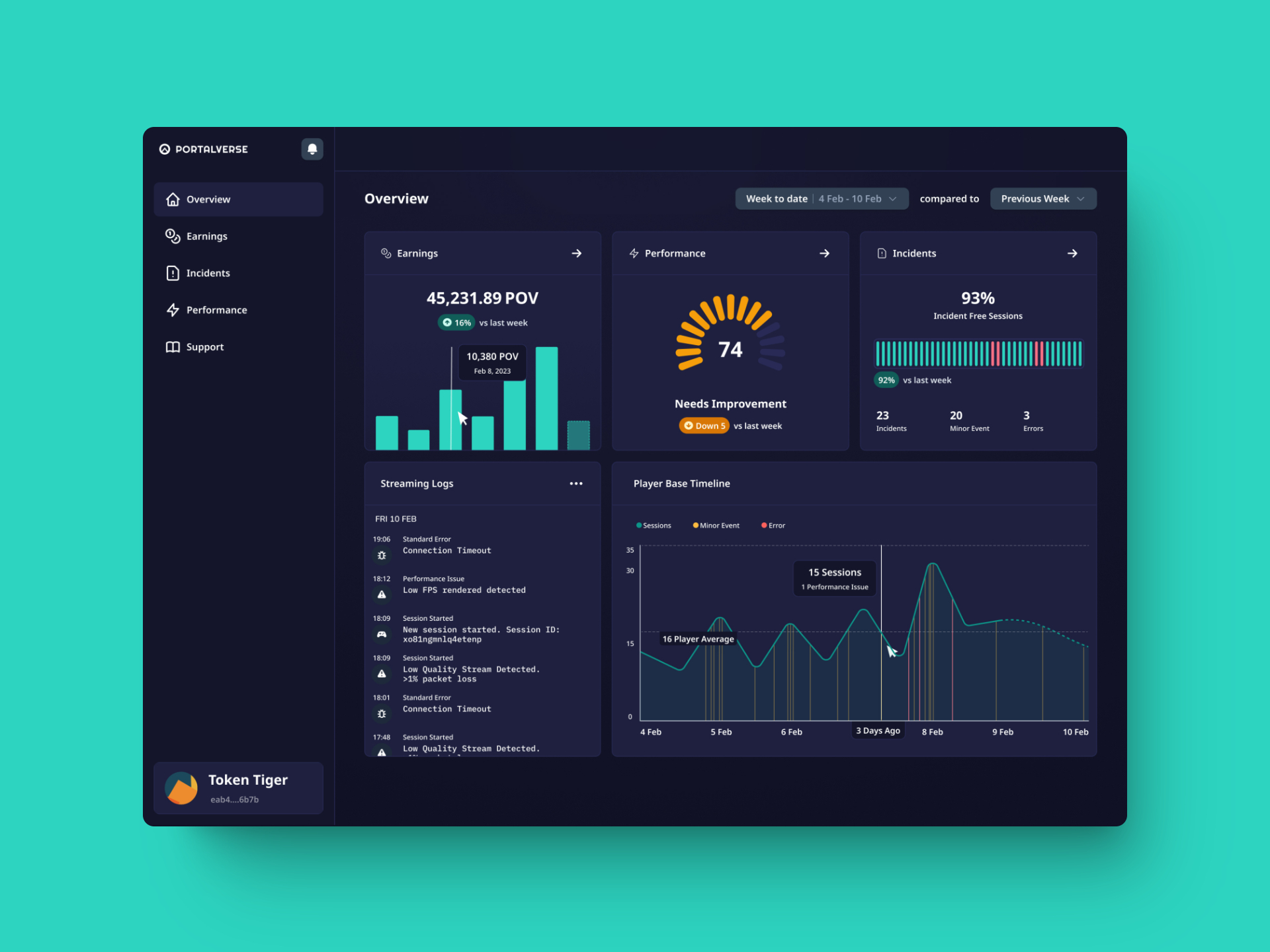
What is Portalverse?
Portalverse is a decentralized rendering protocol, or put simply: a better way to stream games from the cloud. Cloud gaming is a widely recognized solution to improve the gaming experience for users by removing costly hardware requirements and allowing most devices to be used as a gaming machine. However, some of the downsides of cloud gaming are that there are often high latency issues for users and cost issues for service providers. Portalverse attempts to resolve this tension with the innovative use of decentralized technology.
In simple terms, similar to how Uber uses privately owned vehicles to offer ridesharing, the Portalverse draws on existing hardware in the crypto-mining ecosystem to offer cloud gaming services.
Context and Challenges
There was a major structural change in the hardware demands of cryptocurrency. Ethereum (the second largest cryptocurrency) was changing how it worked, no longer needing powerful mining infrastructure to operate. Mining operators were rushing to find new ways to make money on their expensive hardware.
Portalverse presented crypto miners an opportunity; to repurpose their hardware away from proof of work mining to become cloud gaming providers.
There were some major differences between a cryptocurrency miner and a cloud gaming provider. However, the hardware crossover was significant enough for a transition with a modest investment. Medium-sized mining operations generally used gaming GPUs for their mining activities which were the most expensive hardware cost for cloud gaming providers.
Challenges for our vendors
Participation of our cloud providers was essential, as without them there is no cloud gaming service. We connected with a broad group of miners to discuss their concerns, current workflows and hardware capabilities.
Key Features
In response to the challenges faced by our target users, we set out a few must-have features.
Onboarding audit for vendors
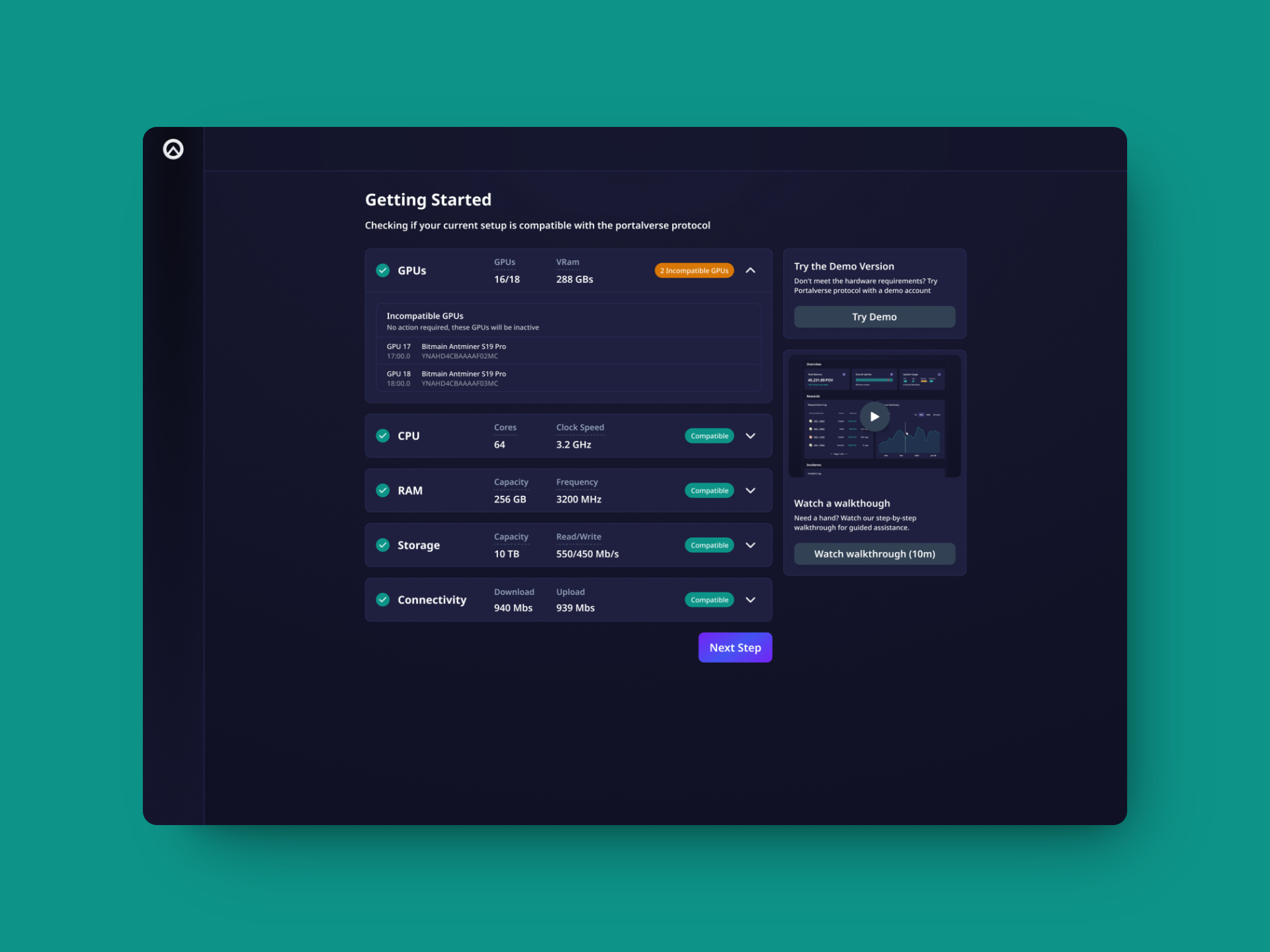
Cloud gaming services have extra connectivity and hardware requirements which cryptocurrency mining does not. As such, during the onboarding process mining operators need to know what changes they need to make to their system. Tests need to be run for hardware compatibility and connectivity. After that a recommended number of virtual machines can be provided.
Virtual Machine Management
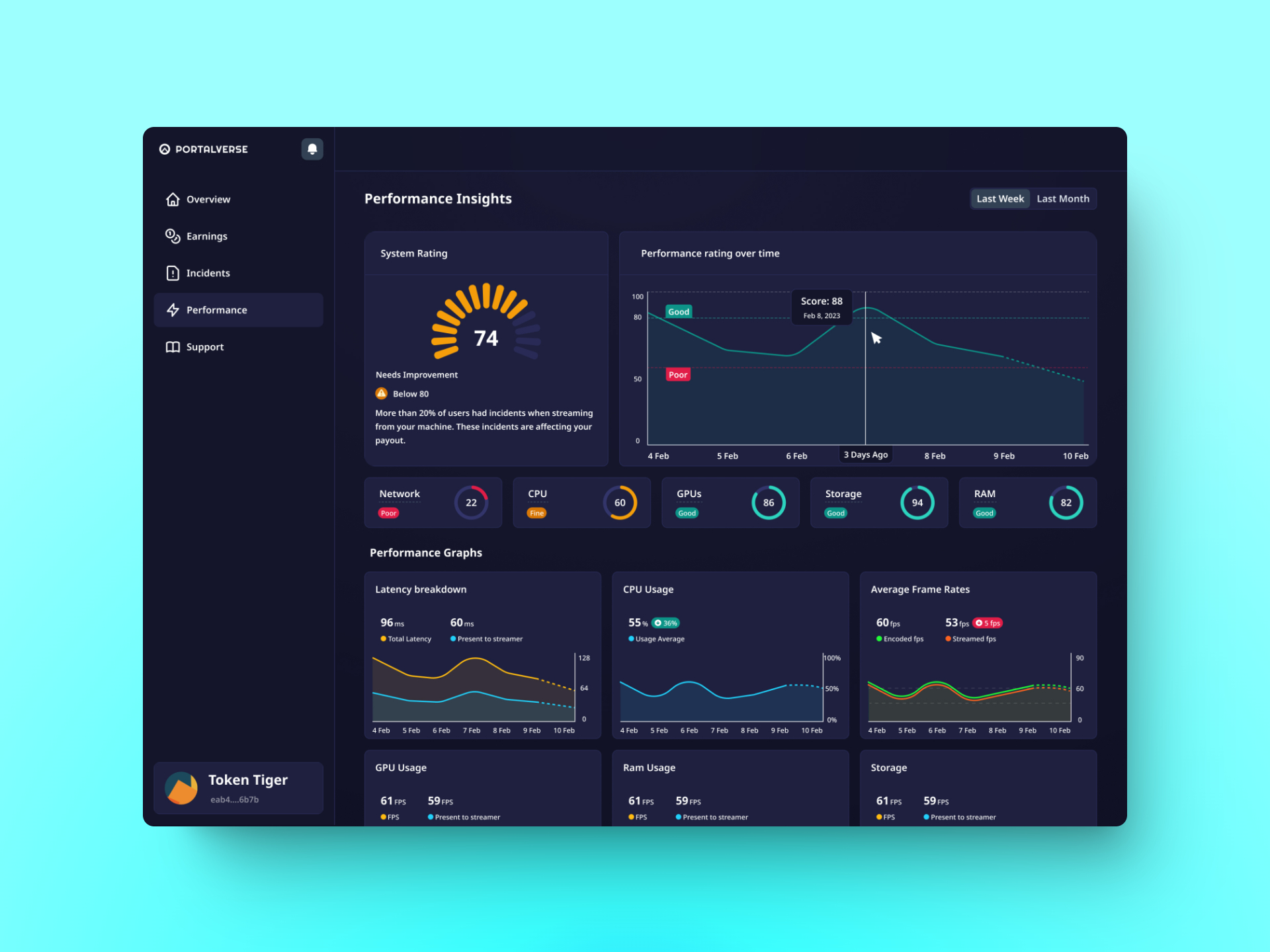
Managing virtual machines was unique to our protocol instead of mining other cryptocurrencies. Miners were unfamiliar with this and were eager to have a tool to simplify the process of troubleshooting, updating, creating and monitoring them.
Earnings breakdowns
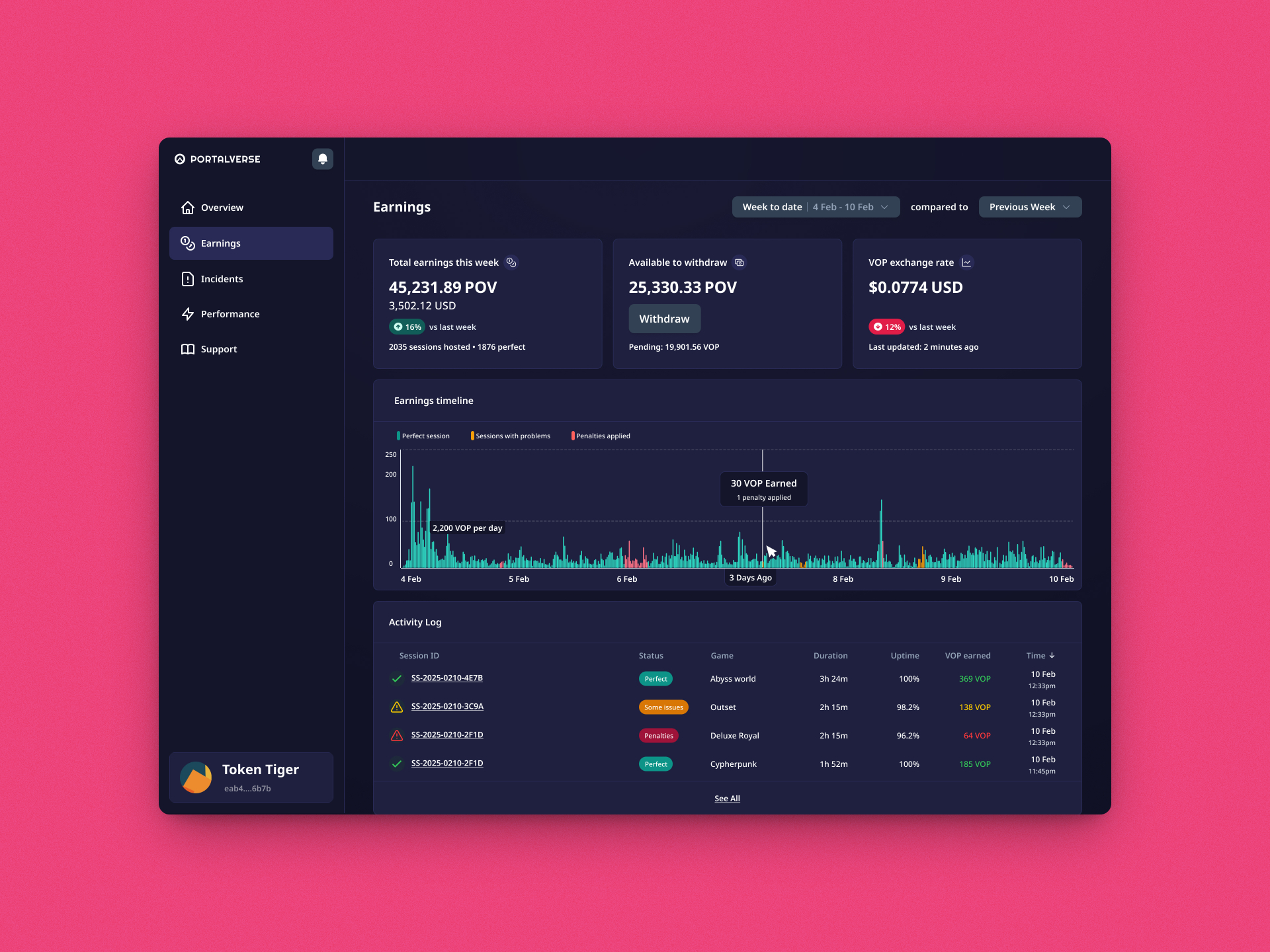
The earnings dashboard gives operators a clear view of how much they are earning from their setup and what specific actions are most rewarded, such as continuous uninterrupted streaming.
Incidents log
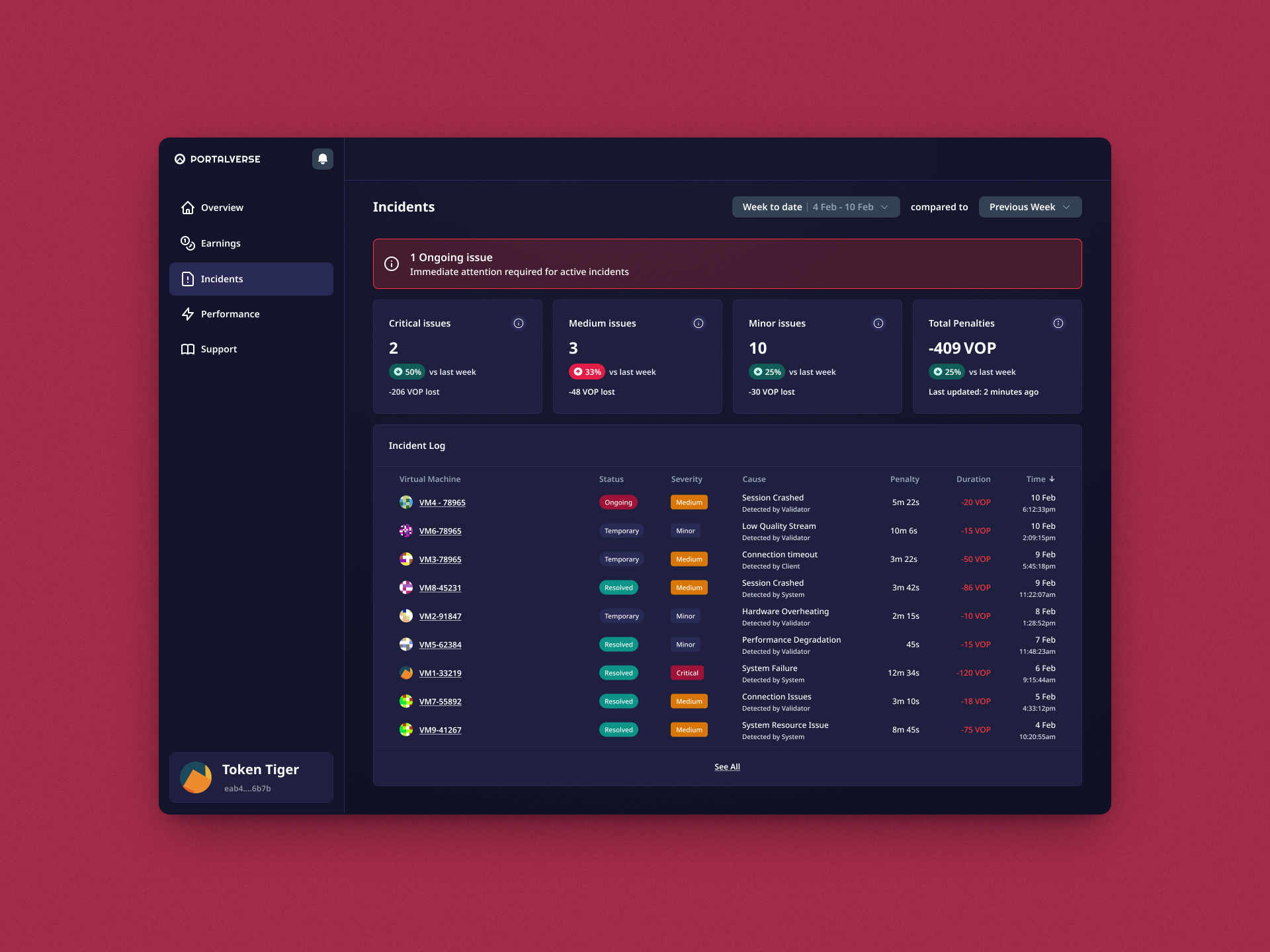
The incident log monitors service disruptions and shows how these correlate with their earnings being penalised. This view gives operators a granular view of what is going wrong with their streaming and clues on how to improve service.
Reflection
What did I Learn?
The biggest challenge wasn't designing for technical users—it was designing for users who were technical in a completely different domain. These weren't typical B2B users who understood software interfaces. They were hardware operators who thought in terms of mining rigs, not user flows.
I had to translate complex technical concepts into familiar mental models. Instead of abstract "virtual machines," I framed everything in terms they understood: hardware utilization, performance metrics, and revenue streams. The interface needed to feel like a mining dashboard, not a software admin panel.
Most importantly, I learned that successful B2B design isn't about making things simple—it's about making things familiar. These users wanted depth and control, not simplification. The challenge was giving them the technical information they needed while making it feel like a natural extension of their existing workflows.
What I learned is that successful platform design requires understanding how different user types interact with the same underlying service, and designing experiences that serve each audience's specific needs while maintaining system coherence.
The Complete Ecosystem
This vendor platform was one part of a larger platform ecosystem. Alongside this B2B2C platform, I also designed a consumer app for cloud gamers—the end users who benefit from the service. This dual-sided marketplace required balancing very different user needs and design approaches.
